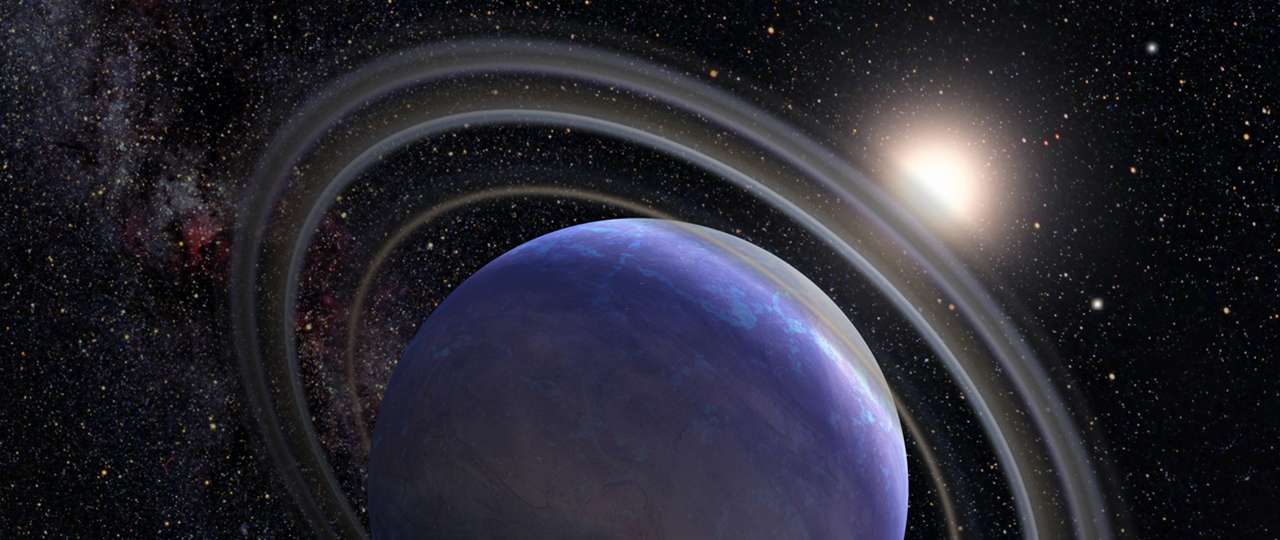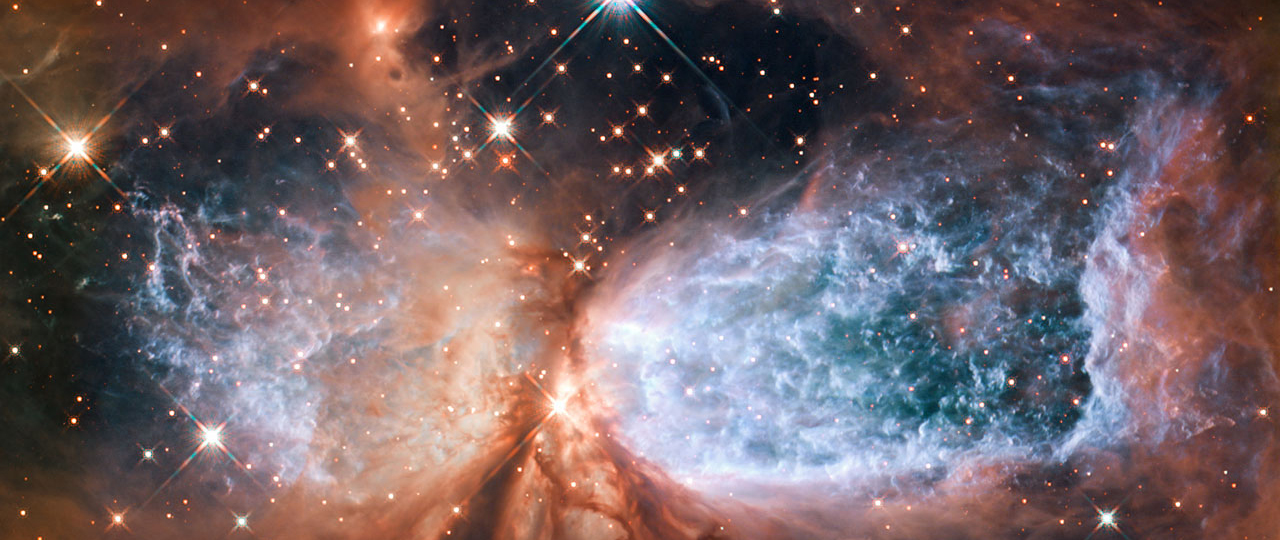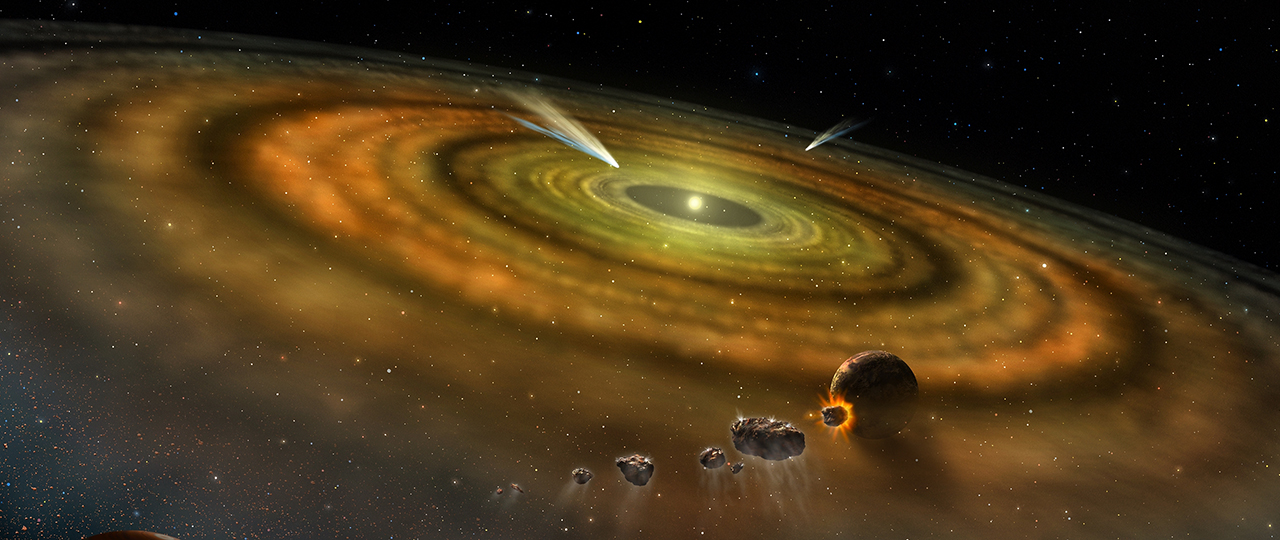Science
Habitable Worlds

LUVOIR will search for habitable conditions and signs of life on dozens of potentially habitable worlds beyond our Solar System. The results of this search will bring a wealth of data on the atmospheric composition and surface conditions of rocky planets in the habitable zones of a variety of stars. These data will revolutionize our understanding of planet-scale habitability, and will allow the first assessments of the frequency with which global biospheres arise on habitable worlds. Confident life-detection requires access to a wide range of molecules, which demands direct spectra with broad wavelength coverage from the near-UV to the near-infrared. The LUVOIR telescope and starlight suppression system can span these wavelengths and access the important constituents of planetary atmospheres, including water, molecular oxygen, ozone, carbon dioxide, and methane.
Comparative Planetology

When we look at the Solar System, it seems delicately balanced to produce a living world. How do we understand the Solar System in the broader context of planetary systems? By studying in detail the wide diversity of exoplanets, we will be able to develop, test, and refine theories of planetary atmospheric processes, including escape, greenhouse, and photochemical effects, under a range of conditions. Our understanding of how planetary surface temperature, climate, and atmospheric structure are influenced by a combination of incident solar flux, cloud and haze physics, and atmospheric composition has thus been profoundly informed by comparative planetary studies. LUVOIR will have the ability to characterize hundreds of transiting and directly imaged planets and will revolutionize our understanding of all classes of extrasolar planets and the common threads that connect them.
The Solar System

There are many things still to be discovered and understood about the bodies within the Solar System. LUVOIR can provide up to about 25 km imaging resolution in visible light for the Jupiter system, permitting detailed monitoring of atmospheric dynamics in Jupiter, Saturn, Uranus, and Neptune over long timescales. Sensitive, high resolution imaging and spectroscopy of Solar System comets, asteroids, moons, and Kuiper Belt objects that will not be visited by spacecraft in the foreseeable future can provide vital information on the processes that formed the Solar System ages ago. The search for life also takes place closer to home. Over the last decades, we have discovered that several moons of the outer Solar System - like Europa and Enceladus - have liquid water beneath their icy surfaces. LUVOIR has an important role to play by determining the currently unknown strength and frequency of geyser activity from Europa and Enceladus, through high resolution monitoring of icy moons.
Cosmology & the Structure of the Universe

The scope of astrophysics investigations that LUVOIR can do is truly vast, covering all the topics addressed with Hubble and more. Experiments extremely difficult or impossible to execute with Hubble's 2.4-meter diameter mirror become easy and possible with LUVOIR, including explorations of the far reaches of space and time. Clusters of galaxies are strung out along dark matter webs like jewels in space, but many unanswered questions remain about the nature of the cosmos. Such questions include the nature of dark matter and how galaxy formation works on small size scales. LUVOIR can address these questions by imaging fainter and smaller structures in the universe than ever before. Additionally, it will be able to map the distribution of dark matter in the nearby universe, and study counterparts to gravitational wave sources in electromagnetic radiation.
Galaxies & Galaxy Evolution

Much of our understanding of galaxy formation and evolution comes from studying the abundances and kinematics of resolved stellar populations. Currently, this is only possible for galaxies in our local group, limiting the types of galaxies that can be studied. LUVOIR's unprecedented resolution will resolve stellar populations in star-forming regions of galaxies at distances up to 10-25 mega-parsecs, accessing more diverse galaxy morphologies, sizes, and cluster environments. In addition, gas flows between the galaxies in the intergalactic medium to be recycled into new stars; much of this process is yet unobserved as it demands the type of sensitive ultraviolet spectroscopy LUVOIR will be capable of.
Star & Planet Formation

We do not yet have general theories to explain the fundamental outcome of the star formation process or the initial stellar mass function (IMF), which describes how many stars of which masses are born. Stars and protoplanetary disks are small in the grand scheme of things; currently, we can only study them in detail when they are relatively nearby. To increase the numbers we can study in different galactic and extragalactic environments, observations at higher spatial resolution are needed, which demands larger telescopes. In addition, the ultraviolet capability provided by LUVOIR is vital for characterizing the materials available for formation of planets and their atmospheres.









